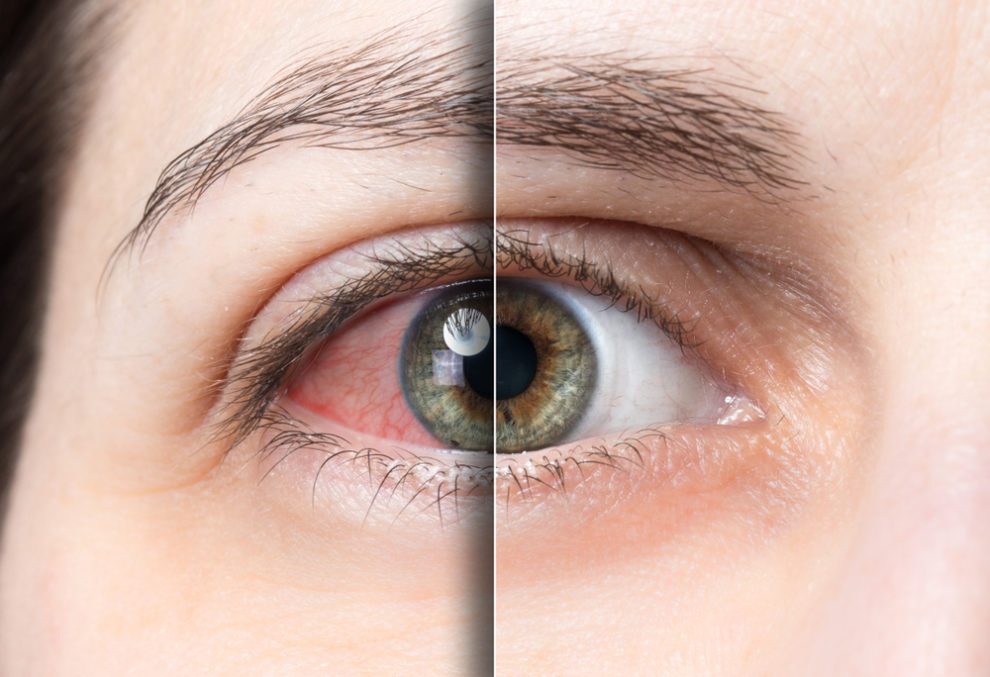Dry eye syndrome, also known as keratoconjunctivitis sicca, is a common eye condition characterized by insufficient lubrication and hydration of the ocular surface. It occurs when tear production is insufficient or tears evaporate too quickly due to decreased tear volume or quality, which compromises the protective barrier between the eye and the external environment. Dry eye syndrome can cause irritation, redness, itching, stinging, burning sensation in the eyes, impaired vision, and an increased risk of infection. It is important to understand this condition before diving into factors to consider in order to better manage it.
Various factors can contribute to dry eyes such as underlying medical conditions (e.g. autoimmune diseases), environmental conditions (e.g. windy or dusty environments), certain medications, aging, and excessive computer use. Additionally, lifestyle changes like avoiding long exposure to screens, increasing humidity levels indoors, and drinking more water may help alleviate symptoms associated with dry eye syndrome. In any case, consulting with an optometrist or ophthalmologist should be the first step toward finding an effective solution for managing this condition.
Factors to Consider When Choosing a Dry Eye Treatment
There are several factors that you need to consider when choosing a dry eye treatment. Here is a list of some of the factors:
1. Severity of Symptoms
The severity of dry eye symptoms can make a profound difference in determining the most effective form of treatment. Mild cases of the dry eye often respond positively to over-the-counter artificial tear solutions, while more severe or persistent cases may require a comprehensive evaluation by an eye care professional. This evaluation will include a thorough examination to assess the cause and severity of your symptoms and help determine the best course of action.
Depending on the individual case, this could involve lifestyle changes, further testing, or prescription medication and/or special lubricants that are specifically tailored to provide relief from discomfort and irritation. Ultimately, it is important to pay close attention to changes in your symptoms and consult your eye care professional if they worsen or persist, as this will ensure you get appropriate treatment for optimal eye health.
2. Underlying Cause
Dry eye syndrome is a common condition that occurs when the eye does not produce enough tears, leading to uncomfortable symptoms like burning, irritation, and itching. Various underlying causes can contribute to this condition, including aging, hormonal changes, certain medications, environmental factors, and medical conditions such as autoimmune diseases. Identifying the root cause of dry eye syndrome can be essential in determining an effective course of treatment.
For instance, if the cause is determined to be meibomian gland dysfunction (MGD), warm compresses and eyelid massages may be beneficial in improving tear production. Additionally, lifestyle modifications such as reducing screen time or wearing protective goggles when exposed to wind or dust can help reduce symptoms associated with environmental factors. Treating any underlying medical conditions or adjusting medications might also improve tear production. By better understanding the underlying causes of dry eye syndrome and taking appropriate actions based on these findings, you can develop a comprehensive plan for managing the condition effectively.
3. Type of Treatment
When it comes to treating dry eye, there are numerous options available for patients to consider. Artificial tears, lubricating ointments, and prescription medications are all common over-the-counter dry eye treatments that can provide temporary relief from symptoms such as irritation and redness. Punctal plugs can be inserted into the tear ducts to reduce tear evaporation while in-office procedures such as thermal pulsation, eyelid therapy, and autologous serum tears may also be recommended based on an individual’s needs.
Each of these treatment methods comes with its own advantages and drawbacks depending on a person’s unique situation, making it important to discuss the pros and cons of each treatment option with your eye care professional before making a decision. With careful consideration of the various treatments available and consultation with a doctor or health provider who is knowledgeable about dry eyes, patients will be able to make an informed choice that is tailored to their specific condition.
4. Long-Term Management
Dry eye is a chronic ocular condition that requires long-term management for effective relief. The most successful treatment strategies involve a combination of approaches and lifestyle modifications that will provide sustained relief over time. These may include daily habits such as increasing intake of omega-3 fatty acids, reducing exposure to allergens, avoiding overly dry air, and wearing sunglasses when outdoors.
Additionally, using products specifically designed to alleviate dry eye symptoms can be beneficial in the short term. If the condition persists, more intensive treatments such as artificial tears or prescription eye drops may be necessary for long-term relief. It is important to note that these medications often require regular use for an extended period in order to maintain their efficacy and should be discussed with your primary care physician before use. With careful monitoring and appropriate interventions, it is possible to manage dry eye symptoms successfully in the long term.
As you tackle the challenge of dry eye, there are a range of factors to consider when deciding on the best course of treatment. The severity of symptoms, underlying causes, type of treatment, long-term management, possible side effects, cost, insurance coverage, and even patient reviews all these components must be weighed in order to reach an informed decision. Crucially, since each case of dry eye is unique, it’s vital to collaborate with an expert ophthalmologist who can guide you toward a tailored solution that addresses your personal needs.
With due deliberation and the aid of an experienced professional, you can find the optimal way to relieve your dry eye symptoms and achieve lasting eye health. In addition to considering the factors mentioned above, utilizing resources such as the Dry Eye Directory can also assist in finding local specialists and clinics that specialize in dry eye treatment.













